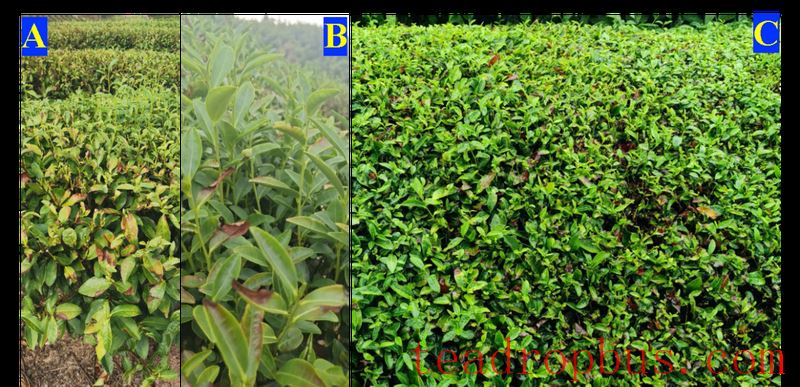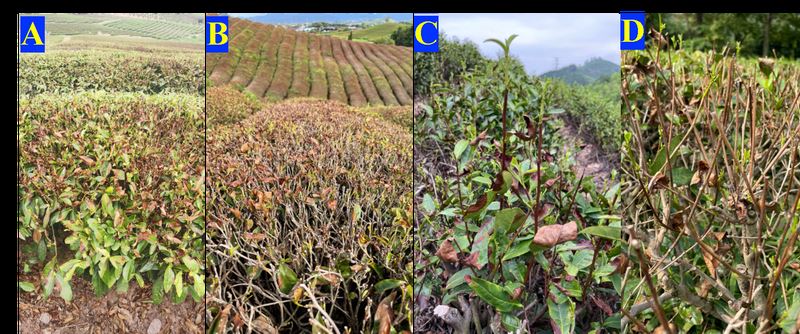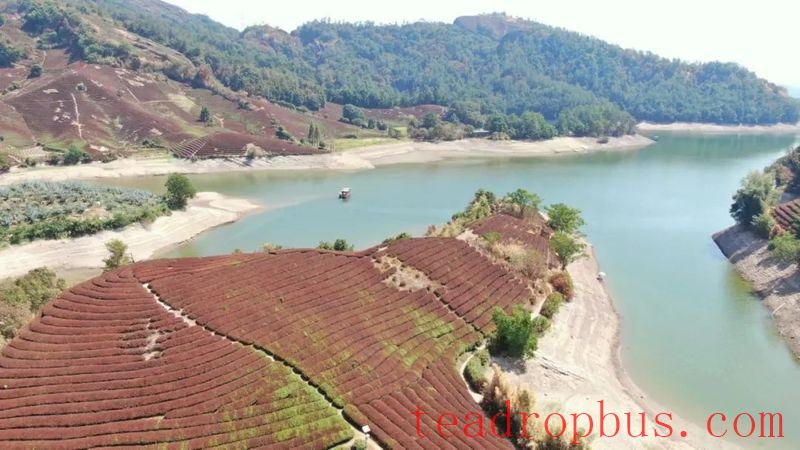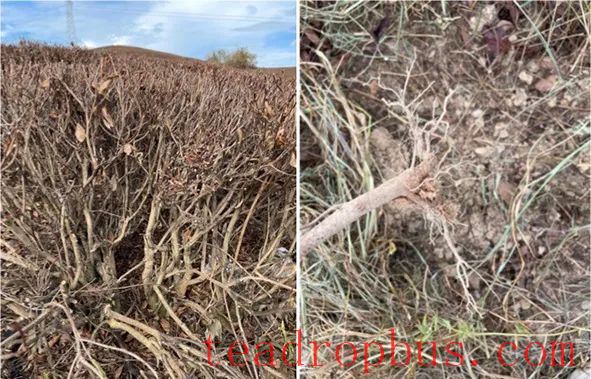After Tea plants have suffered from the hazards of high temperatures and drought, targeted post-disaster remedial and recovery measures should be taken based on the different degrees of damage to promote the rapid recovery of the tea plants and minimize economic losses in the Tea Garden as much as possible.
I. Slightly Affected
Slightly affected tea plants may show signs of scorch marks or Leaf drop in a small portion of their leaves, but most of the leaves remain intact, and the top shoots are unaffected (Fig. 1). In this case, the following measures should be taken:
1. The canopy of the tea plants does not need to be pruned; allow the tea plants to sprout and resume growth naturally.
2. For mechanically harvested flat tea gardens, although the tea plant leaves are not extensively damaged, the growth of the plants is inhibited (Fig. 1-C). Amino acid foliar fertilizer can be applied, or after the drought eases and the soil becomes moist, quickly apply fast-acting fertilizers such as diammonium phosphate or urea at 10-20 kg per mu to improve the nutritional condition of the tea plants and promote their rapid recovery. However, for three-dimensional canopy tea gardens that only harvest spring premium tea (Fig. 1-A, Fig. 1-B), it is necessary to base the decision on the growth of new shoots, especially the axillary buds. Do not blindly apply fertilizers just to rapidly replenish nutrients, as it is important to control the growth of axillary buds to avoid their emergence before winter, which could impact the yield and quality of Spring Tea.
3. After the drought eases and the soil becomes moist, the application time of the autumn-winter base fertilizer should be advanced. Conventional tea gardens can apply organic fertilizer at 200-300 kg per mu, along with compound fertilizer at 15-30 kg per mu. Fertilizer should be applied in trenches and then covered with soil.

Fig. 1 Slightly affected tea plants by heat and drought
II. Moderately Affected
Moderately affected tea plants may show signs of scorch marks or leaf drop, but the top branches are not affected, and new shoots are emerging (Fig. 2). In this case, the following measures should be taken:
1. The canopy of the tea plants does not need any pruning; allow the tea plants to sprout and resume growth naturally.
2. Regardless of whether the tea garden is a mechanically harvested flat canopy (Fig. 2-A, Fig. 2-B) or a three-dimensional canopy garden that only harvests spring premium tea (Fig. 2-C, Fig. 2-D), after the drought eases and the soil becomes moist, apply fast-acting fertilizers such as diammonium phosphate or urea at 15-20 kg per mu. Additionally, if there is still a layer of green leaves (Fig. 2-A, Fig. 2-C), amino acid foliar fertilizer can be applied to promote the rapid recovery of the tea plants.
3. Advance the application of the autumn-winter base fertilizer. After rainfall when the soil is moist, conventional tea gardens can apply organic fertilizer at 200-300 kg per mu, along with nitrogen-rich compound fertilizer at 20-30 kg per mu. Fertilizer should be applied in trenches and then covered with soil.

Fig. 2 Moderately affected tea plants by heat and drought
III. Severely Affected
Severely affected tea plants experience significant dieback of the canopy branches. In this case, the following measures should be taken:
1. The canopy of the tea plants needs timely pruning to remove dead branches. However, attention should be paid to the degree of pruning; generally, it is preferable to prune lightly to retain as much of the non-dead branches as possible.
2. After rainfall when the soil is moist, fertilization should be carried out promptly, advancing the autumn-winter base fertilizer. Conventional tea gardens can apply organic fertilizer at 300-400 kg per mu, along with compound fertilizer at 20-30 kg per mu. Fertilizer should be applied in trenches and then covered with soil.

IV. Extremely Affected
Extremely affected tea plants experience dieback of the canopy branches, and even the roots may die, leading to the death of the entire plant. In this case, further observation is needed after the drought eases to determine if the entire plant has died.

1. If the entire plant has died, replanting should be considered. Carry out deep thorough plowing, add guest soil, eliminate soil obstacle factors, and then replant according to standard garden establishment methods. Areas unsuitable for tea plant growth should be repurposed.
2. If the root system is still alive, stumping can be performed. At the same time, immediately after rainfall when the soil is moist, fertilize. Conventional tea gardens can apply organic fertilizer at 300-400 kg per mu, along with compound fertilizer at 20-30 kg per mu. Fertilizer should be applied in trenches and then covered with soil.
In cases where tea gardens suffer from extreme climate disasters such as high temperatures and drought, targeted technical measures should be taken promptly based on the degree of damage and production conditions (mechanically harvested flat canopy tea gardens or premium tea three-dimensional canopy tea gardens) in terms of pruning and fertilization to restore the vigor of the tea plants and reduce the losses caused by the disaster as soon as possible.
(Authors: Yan Peng, Zhou Xiaofen, Li Xin, Han Wenyan)